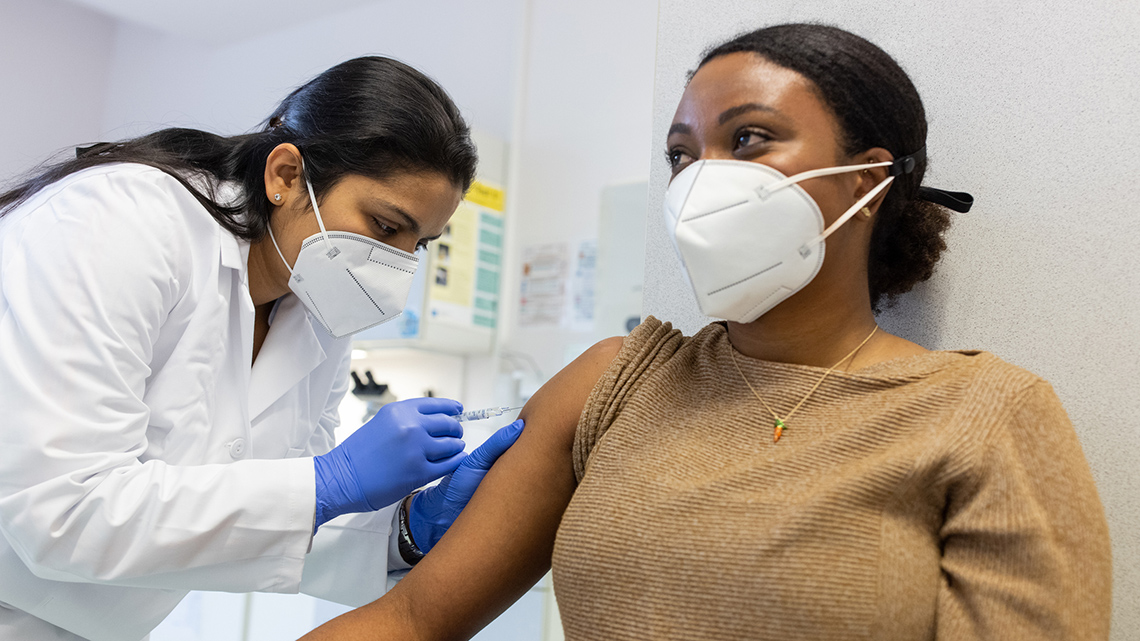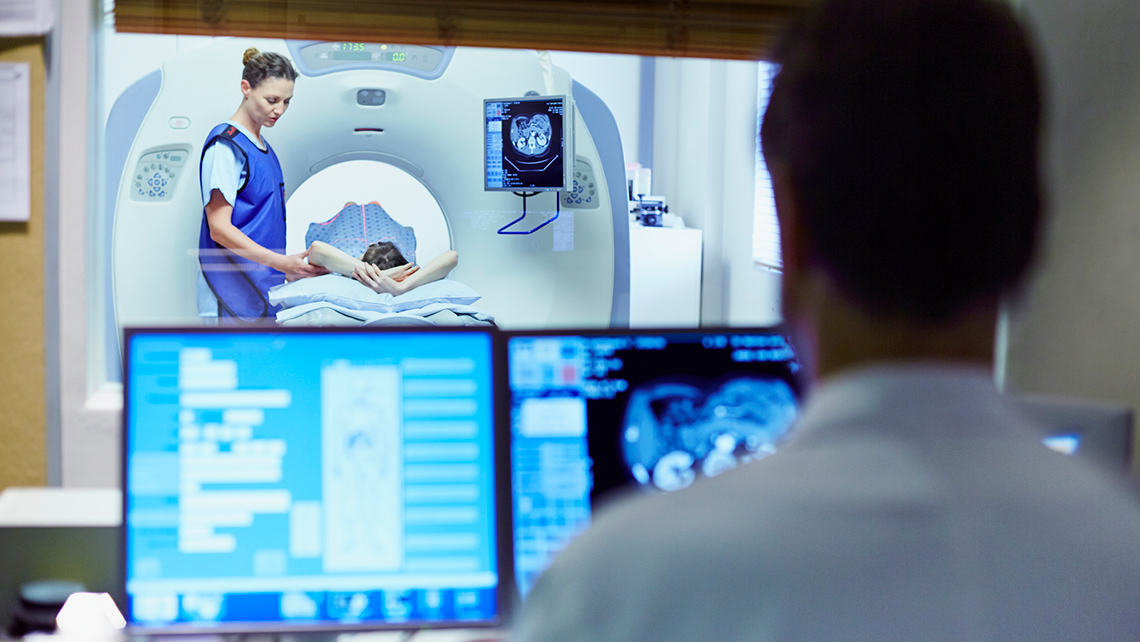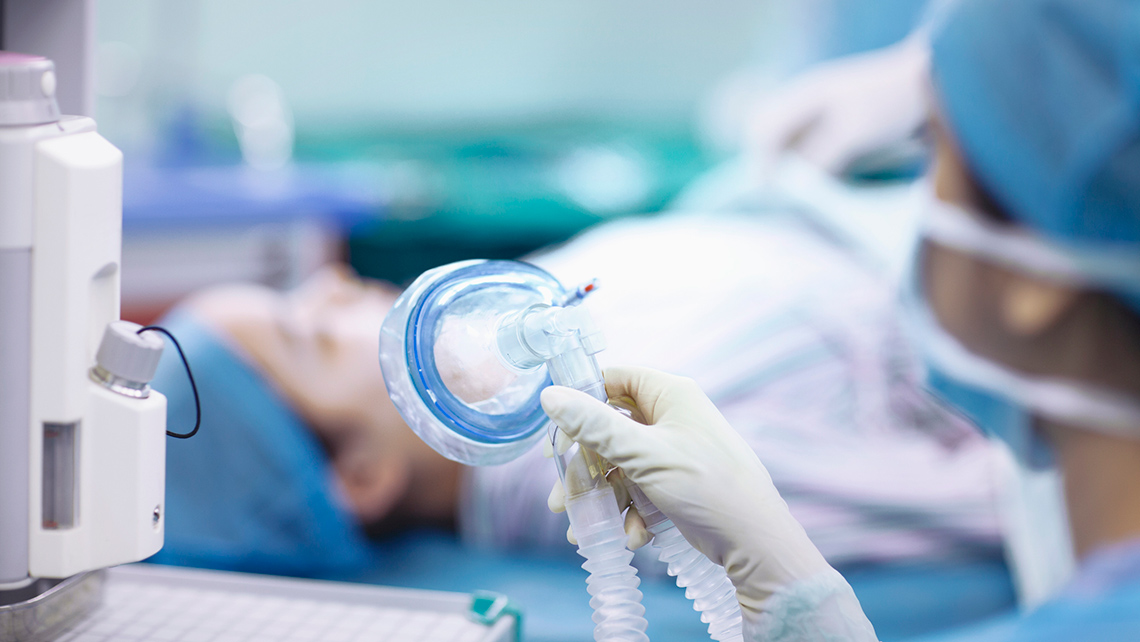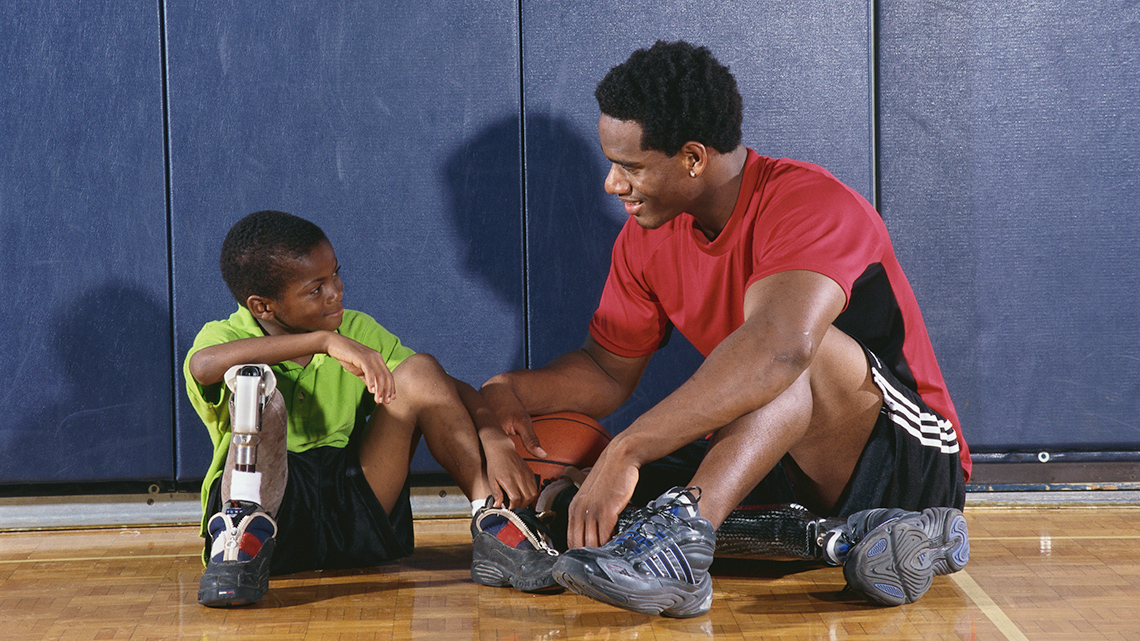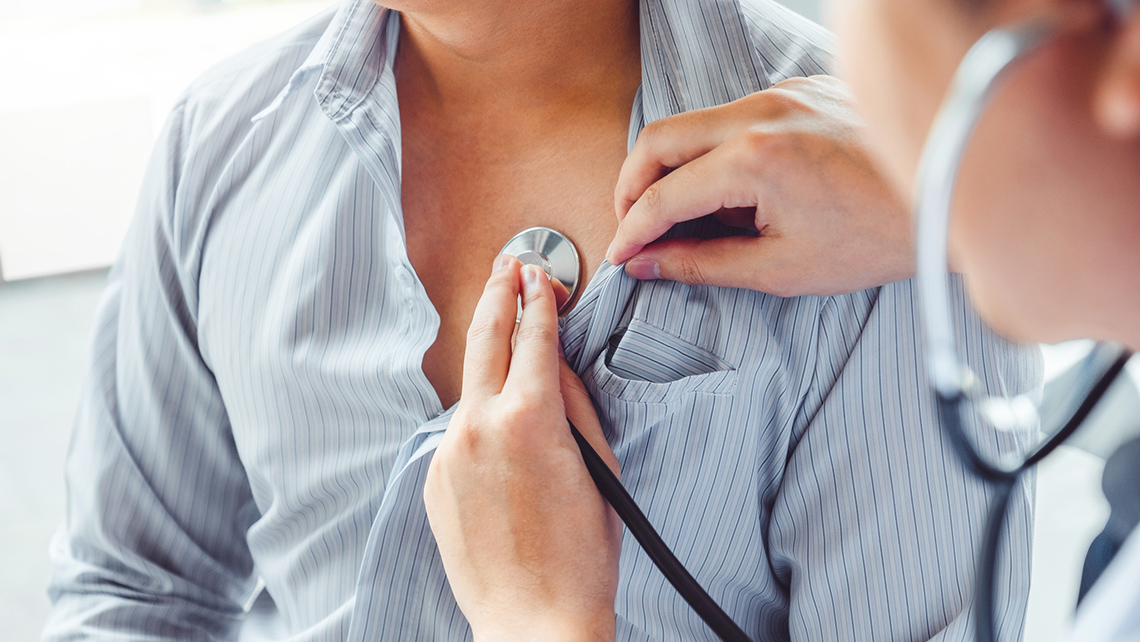Minds On
Medical advancements
Let’s explore the following images.
Brainstorm
Let’s think!
After examining the previous images, brainstorm a list of major technological advancements and scientific discoveries that have improved human health.
Record your list and ideas in a notebook or another method of your choice.
When your list is complete, press ‘Let’s Check!’ to access a sample list.
You may compare your list with the following list of technological advancements and scientific discoveries then add these advancements to your list.
Advancements include:
- vaccines (preparations that produce an immunity to a specific disease)
- anesthetic (a substance that reduces pain or puts someone to sleep before surgery)
- advancements that provide clean water
- antibiotics (medicines that stop infections caused by bacteria)
- medical imaging (for example, X-ray, CT scan, MRI, etc.)
- organ transplants
- medical thermometer
- stethoscope (a device that allows doctors to listen to the heart and other internal organs)
- pacemaker (a small device implanted in the chest to help regulate your heartbeat)
- prosthetics (an artificial device to replace a missing limb or other body part)
Action
Innovation in Canada
This learning activity features emerging technologies, STEM contributions, and Canadian innovations that are making a difference.

Advances in medical imaging
Medical imaging refers to several different technologies that are used to view specific areas of the human body in order to diagnose, monitor, and treat medical conditions.
Different technologies give different information about the part of the body being scanned. These technologies can help medical professionals learn more about cells, tissues, organs, bones, and systems within the body.
Press the following tabs to access information about several different types of medical imaging.
X-ray was invented in 1895. X-ray uses radiation to generate images of the body. X-ray images help diagnose injuries or diseases, and monitor treatment. Having an X-ray is not painful. However, prolonged exposure to radiation can be harmful to DNA.
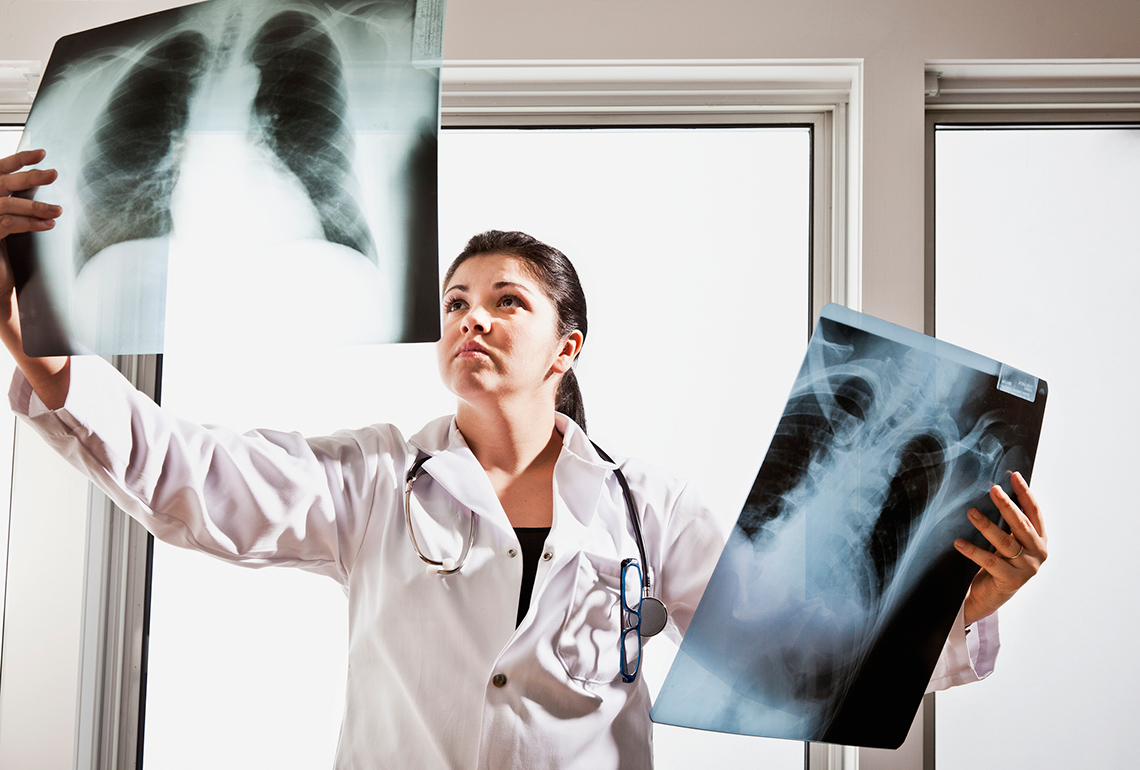
X-ray
MRI (magnetic resonance imaging) was invented in 1977 and uses strong magnetic fields and radio waves to create 3D images of internal structures of the body. An MRI is able to provide medical professionals with very precise details about body parts. This includes soft tissue. An MRI is painless and avoids the use of radiation; however, it is very expensive and may be difficult for patients as it requires them to remain still while confined in a small space.
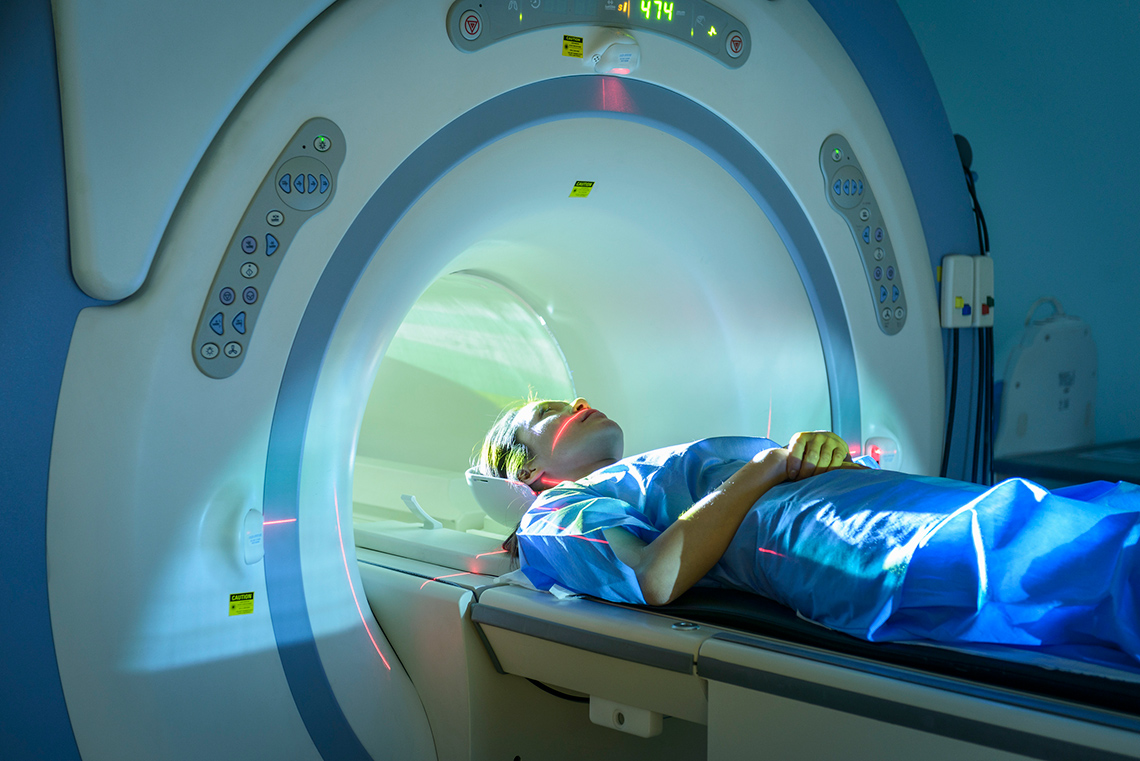
Magnetic resonance imaging scanner
Ultrasound (sonography) was invented in 1956. It uses high-frequency sound waves to view inside the body in real time and can show movement of internal organs and blood flow. It is non-invasive and is based on non-ionizing radiation, which is a safer way to scan the body than methods using ionizing radiation like X-ray. However, ultrasound imaging can create small pockets of gas in body fluids or tissues and is recommended only for medical purposes

Ultrasound

CT scan
The CT scan (computed tomography scan) was invented in 1972 and uses a series of X-rays to produce 3D images of soft tissues and bones in great detail. The scans allow us to detect diseases and injuries. CT scans are generally considered safe. However, they use radiation, which can have long-term harmful effects on the body, such as causing cancer.
Task: Advantages and risks?
Based on what we have learned so far, assess the advantages and risks of each type of medical imaging.
Complete the “Advantages and Risks Chart” in your notebook or using the following fillable and printable document. If you like, you may use speech-to-text or audio tools to record your thoughts.
|
Medical Imaging Type |
Advantages |
Risks |
|---|---|---|
|
X-ray |
||
|
MRI |
||
|
Ultrasound |
||
|
CT scan |
Press the ‘Activity’ button to access Advantages and Risks Chart.
When you’re ready, press ‘Let’s Check!’ to access the advantages and risks of medical imaging.
|
Medical Imaging Type |
Advantages |
Risks |
|---|---|---|
|
X-ray |
painless diagnoses diseases and injuries monitors treatments |
radiation is harmful to DNA |
|
MRI |
does not use radiation scans large areas of the body |
expensive machines to buy and operate difficult for patients as it requires them to remain still |
|
Ultrasound |
shows movement of organs and blood flow mostly safe and avoids radiation |
can cause small gas pockets in tissue or body fluid |
|
CT scan |
uses combination of x-rays and 3D images good for up-close scans of bones and tissues painless |
long-term exposure can cause cancer |
Did You Know?
Did you know?
The technologies we have just explored have been available for quite some time. Over the past few decades, the capabilities of medical imaging have dramatically increased. Due to scientific research and technological innovation, there have been many advancements in medical imaging. These advancements are crucial to providing more accurate diagnoses and advancing human health care.
The future?
For this task, we will pick one of the medical imaging technologies explored in this learning activity and do some research on the internet to investigate major medical advancements that showcase the future of this medical imaging technology.
Before beginning your research, explore this video to learn about the steps of the Scientific Research Process. This will help guide you as you work your way through this activity.
Time to research!
- Choose one of the four medical imaging technologies explored in this learning activity (or you could choose an alternative option that you know about) to investigate further.
- Using the internet, do some research to explore how this technology has advanced, how the advancement was developed, by whom, and how it is contributing to stronger health care.
- Record your findings in your notebook or using another method of your choice. If possible, share your findings with a partner.
You may use the following checklist to guide your investigation.
I can choose resources by…
I can analyze and interpret findings by…
Consolidation
Exploring medical careers
Let’s explore various careers that are connected (directly or indirectly) to the human body and health care (X-ray technicians, nutritionists, nurses, etc.).
Create a collage that showcases a variety of health-related careers. Try to include at least 10 different career opportunities.
You can create your collage by drawing images, searching for online images, and/or using words.

For this section of the learning activity, there are two options.
- Option A is to choose two careers that interest you the most to explore in depth.
- Option B is to prepare interview questions for two people who are seeking work in a career associated with body systems and/or health care.
Option A: Researching Careers
Choose two careers from your collage that interest you the most to explore in depth. Be sure to include the following in your research:
- job and description
- opportunities for employment (for example, identify places or companies where they could work)
- education and skills required
Record your ideas and findings in a notebook or using another method of your choice.
Option B: Interview planning

Formulate questions that you would like to ask a potential interviewee for two different career opportunities. For each interviewee, try to create at least 4 questions.
Press ‘Let’s Check!’ to access sample questions.
Possible questions:
- What is your day-to-day experience at your job?
- How are you helping people or how is this connected to health care?
- What education or skills did you need to get your job?
- Where do you work? Where else could you work?
- What’s your favourite (or least favourite) part about the job?
Research answers to your interview questions or if possible, interview someone you may know in this field.
Record your questions and findings in a notebook or using another method of your choice.
Review your learning
For this activity, sort the advantages and risks by choosing the medical imaging type it is associated with.

Pause and Reflect
Pause and reflect
Reflect and respond to the following questions:
- Based on what we’ve learned today, why is it important for scientists to continuously research, develop, and test new technologies to advance health care?
- Consider what you know about health care already and what you’ve learned today. If you could invent any new technology or advancement, what would it be and why?
Record your ideas in a notebook or using another method of your choice.
Reflection
As you read the following descriptions, select the one that best describes your current understanding of the learning in this activity. Press the corresponding button once you have made your choice.
I feel…
Now, expand on your ideas by recording your thoughts using a voice recorder, speech-to-text, or writing tool.
When you review your notes on this learning activity later, reflect on whether you would select a different description based on your further review of the material in this learning activity.
